Higher is Better: The Potential Benefits of Ultra-High Resolution Sensors
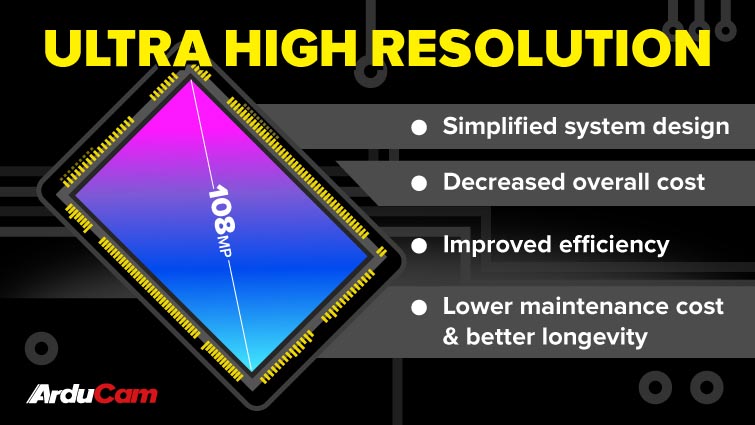
Resolution is one of the most crucial specifications that define modern-day CMOS sensors. If one has to list all the factors directly associated with a camera and come up with rankings based out of their impacts over image quality, many will find that the resolution of a camera may not even get into the top three.
But when use cases for cameras switch from the consumer side to the industrial side, the said rankings will change dramatically and resolution alone will make a huge difference.
For IoT/Machine Vision applications, having camera hardware built with ultra-high resolution sensors means:
Simplified system design
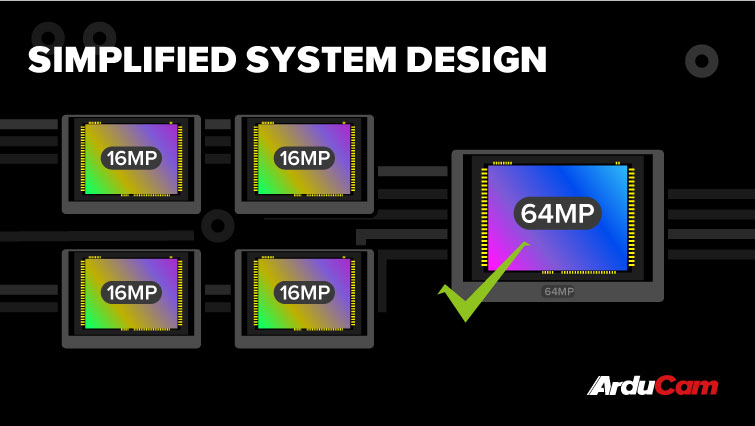
A single-camera solution can have the equivalent coverage of a solution with multiple low-res cameras, the footprint can be much smaller too.
Decreased overall cost
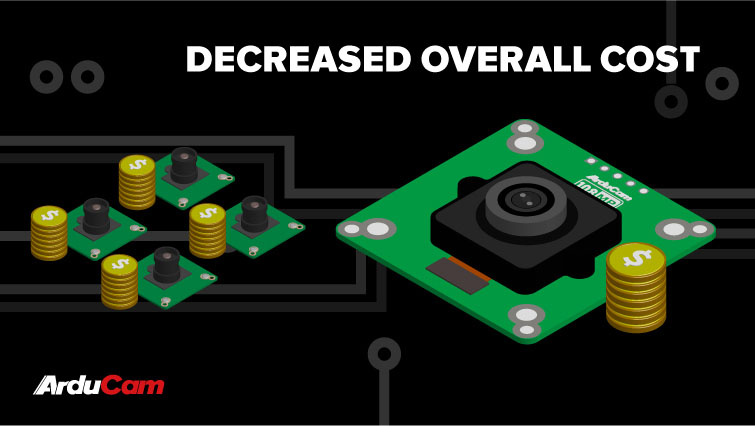
You can reduce the costs of getting sets of camera accessories (cable/housing/etc.) for multi-camera systems and the extra software development for handling multiple data streams.
Improved efficiency
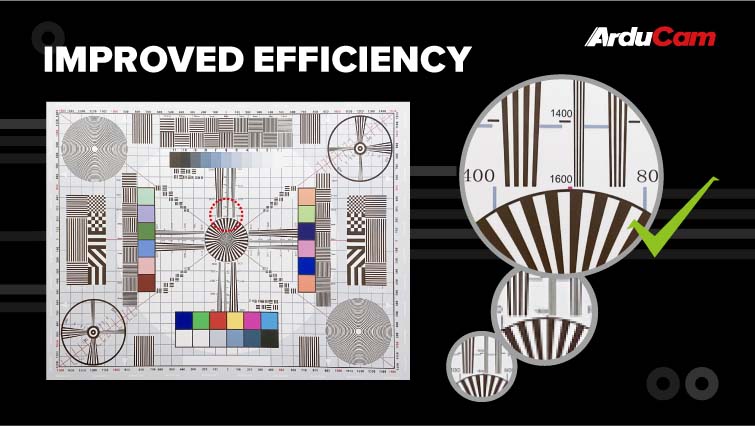
You can reserve more practical details in zoomed-in/cropped views, which, for many recognition/detection applications, are a guarantee of accuracy.
Lower maintenance cost & better longevity
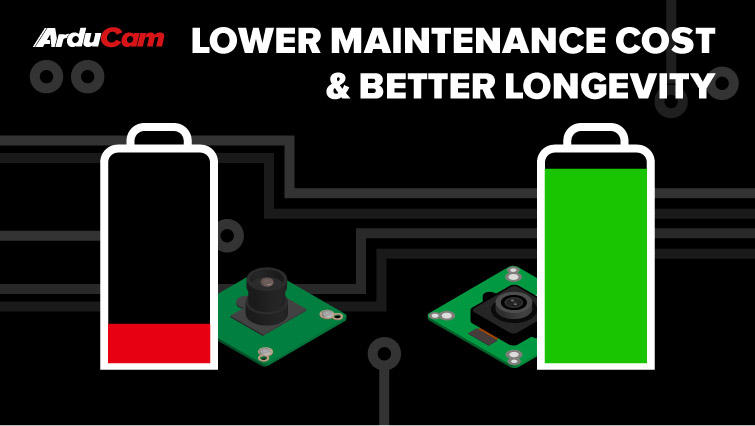
Single-camera systems are generally more stable than systems with multiple sensors, they can be easily maintained and have longer life circles.
To play the resolution game well and serve it in the interest of end users, Arducam took a slightly different route.
Employing Smartphone Cameras in Embedded Vision Solutions
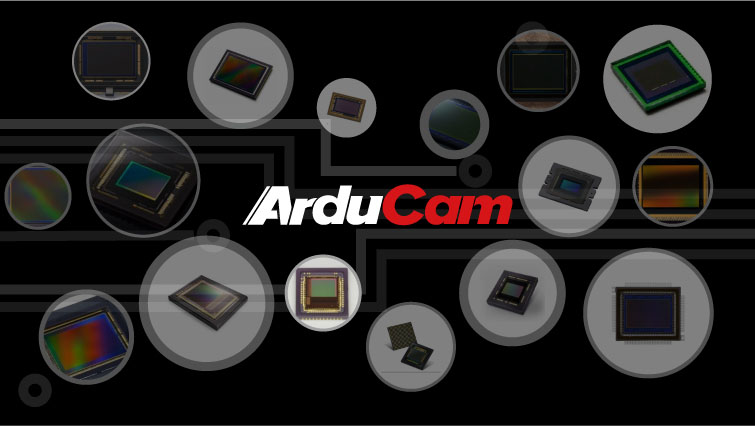
The price points of industrial cameras are unrealistic for SMBs and indie makers/researchers with low-budget projects, and for those who want to build lean, cost-effective vision solutions at a large scale, affordable alternatives are needed.
With a focus on agility and flexibility, we developed a system that is capable of adopting the technological advancements in today’s high-end phone cameras and transforming them into hackable solutions everyone can use.
Our camera evaluation system can help reduce your POC time from months to literally hours and can be integrated into various vision solutions, just like industrial cameras.
New 108MP USB 3.0 Camera Evaluation Kit
Our engineering team spent half a year prospecting and did numerous validations with dozens of in-market phone sensors, they ended up building something really big.
And the latest in our USB 3 camera dev kit family boasts 108MP with a total of 12000×9000 effective pixels and a motorized focus lens.
Demo:
Full specs:
| 108MP Evaluation Kit | |
|---|---|
| Optical Size | 1/1.5“ |
| Number of effective pixels | 12000×9000 |
| Frame Rate | RAW10, 4000×3000@11fps RAW10, 12000×[email protected] |
| Interface | MIPI 2-Lane |
| Focus | 8cm ~ INF |
| Focal ratio (F-Stop) | 1.89 |
| Focal length | 5.89 |
| View Angle | 82 diagonal |
| Dimensions | 38x38mm |
| Shutter Type | Rolling |
| Color Filter | RGB |
| Output Format | RAW10 |
Comparison:
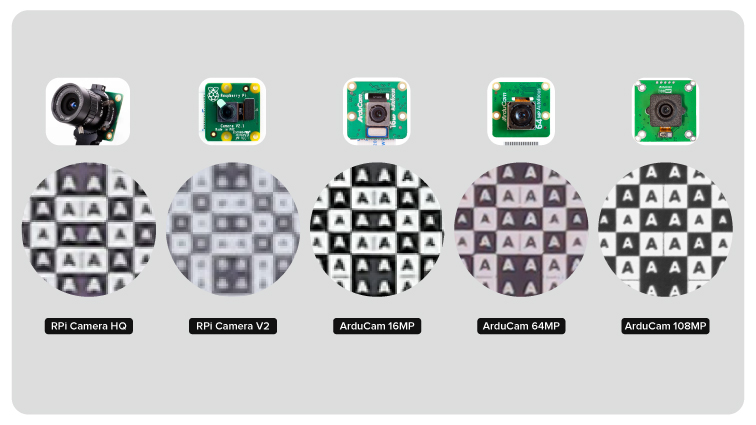
Sample:
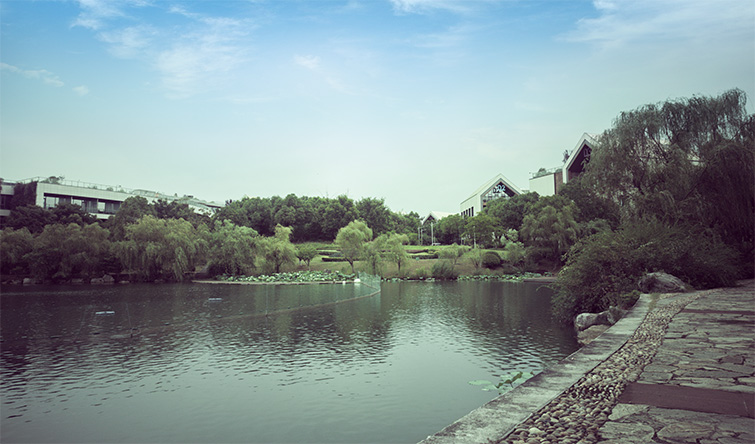
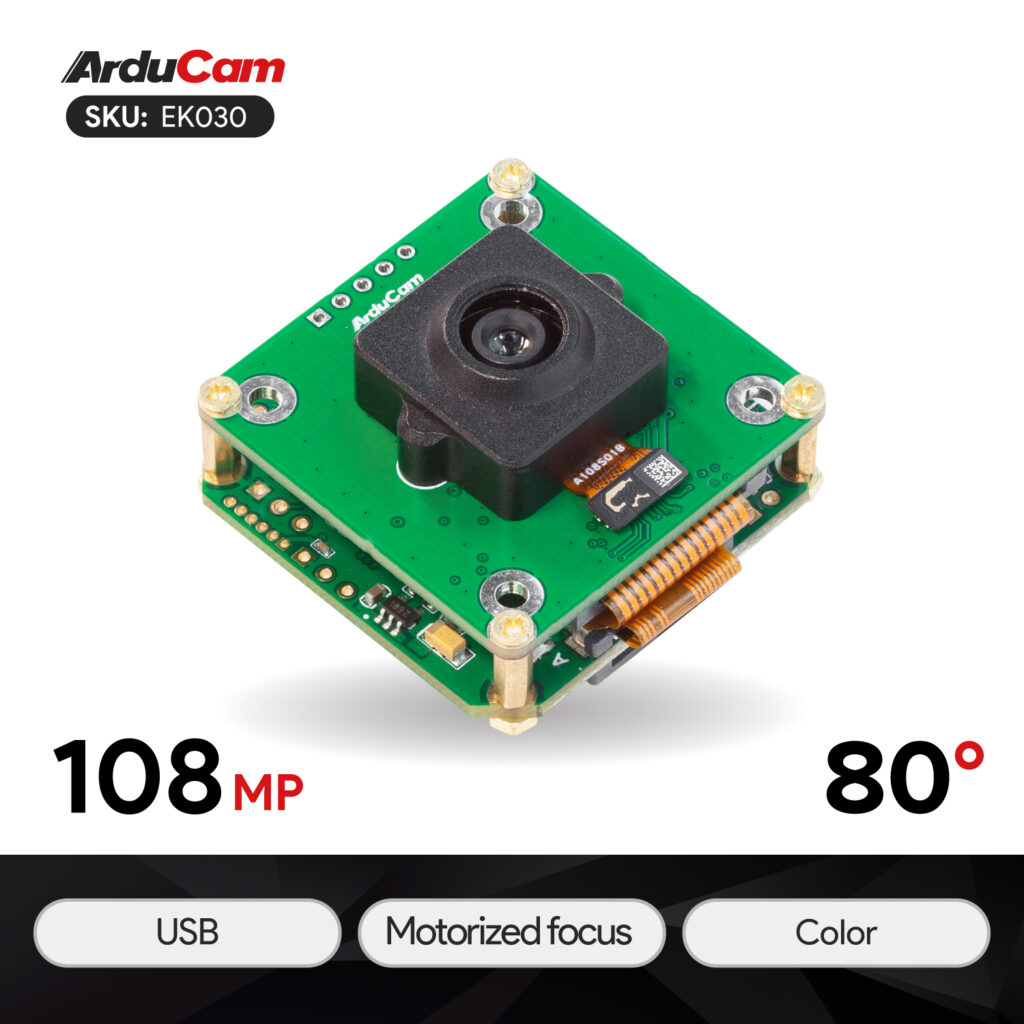
108MP USB 3.0 Camera Evaluation Kit, Motorised Focus
Need help customizing it for your application? Or want to use it on Raspberry Pi/Nvidia Jetson Boards?
Build Applications Faster with our USB Camera Dev Kits
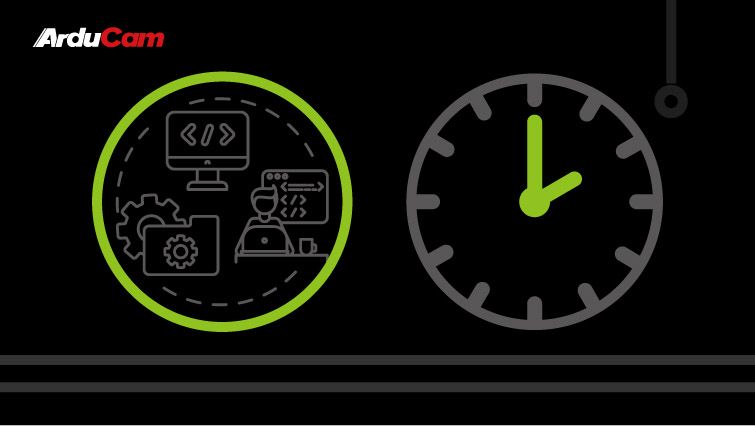
In the traditional way of POC (proof of concept) building for camera systems or MV applications, the options you have with cameras are limited, you either choose what’s already available or work out all the nitty-gritty just to verify if a certain sensor is a right fit for your target project, it’s time-consuming and can inevitably crank up your overall spend.
To fix the latter problem, we made a camera evaluation/development system that can take any image sensor you find, and quickly turn it into a working camera with a complete SDK and a convenient USB 2/3 connection for you to run quick tests on any hardware.
The evaluation system has three solutions:
- Tested-and-proven evaluation kits
- Mix-and-match with different sensors, lenses, etc.
- Customize with anything you want.
And one major objective:
To eliminate the camera evaluation process so you can get started with other parts of your project/application as soon as possible.
All you need is to pick your hardware of choice, and the rest (of evaluation) is already figured out.



Hi,
Your new very high pixel rate camera modules are a very good idea for a lot of applications which need resolution for image analysis in details. For example, I plan to build an automatic insect monitoring trap based on image date. So I need a big monitoring range of a 1.5 … 2 m³ surface. In low resolution, I can detect objects in this range, set ROIs and than take only the ROIs in high resolution. Either, I use a normal resolution camera for recognizing ROIs and a pan-tilt tele camera to get the content of ROIs in high resolution. Or, I take an array of cameras over the complete observing surface. Or, such a high resolution solution. I think, this use case explains a lot of typical scenarios for high resolution cameras as an replacement of camera arrays and automatic pan-tilt mechanism solutions what are expensive and susceptible to failures.
But a question to Arducam team:
If I plan such a project, so I know the resolution what I need at least in the image. We know the resolution of the camera. But the second object of interest is the lens in front of the camera. ‘Resolution at least’ means in this case the resolution what can deliver the lens over the complete image ‘at least’.
For the 64MB camera, Arducam published a comparison image between some camera types. But there are no absolute dimensions at this images. And, I assume, this is in the middle of the image. For some cameras, we can recognize the pixel size in this images. But this is not seriously. Any resolution information about the really resolution over the radius are missing at all camera modules inclusive lens(!). Some sample images in the nature, like for the 64MP camera, are not enough to decide if my project needs a 16MP, 64MP or 108MP camera module to get the needed resolution in the corners of the images.
Maybe, such facts are not strong interesting for hobby makers. But your justification for the high resolution models are special use cases.
Your work is very good for use cases what needs only less pieces (one prototype). Is very good for use cases in different scientific areas, where are no professional devices on market. But for such people it is not interesting, how is the pixel resolution of the sensor alone: Always interesting is the minimum resolution what we get all over the image depending of sensor AND lens system.
Please: Publish some material for your modules for RasPi/Jetson/USB-SDK. So that we can plan our solution without ordering all of your modules to test this by our-self. I, and I think a lot of other persons, would like decide about the right camera module, before we order this.
Would this be possible? Also for this 108MP module?
A really measurement like defined in standards is not essential. Such test images like your ‘A’s for the 64MB module but inclusive pixel size legend and for different positions in the image inclusive all 4 corners would a good starting point. And please, gives the guarantee that the same lens is installed in the delivered modules.
Best regards, Frank
What is the pixel size of the lens and what is the pixel size of the matrix? What is the distortion level of the lens? Is this possible to buy matrix alone with c-mount thread? A good lens for a matrix like that should cost double that price to reach a good quality image. Could you prepare the matrix only with the c-mount lens?
I use the Pi HQ camera for microscopy as it doesn’t have a lens attached. Is it possible to take the 108 MP camera and remove the lens, and turn off autofocus ?